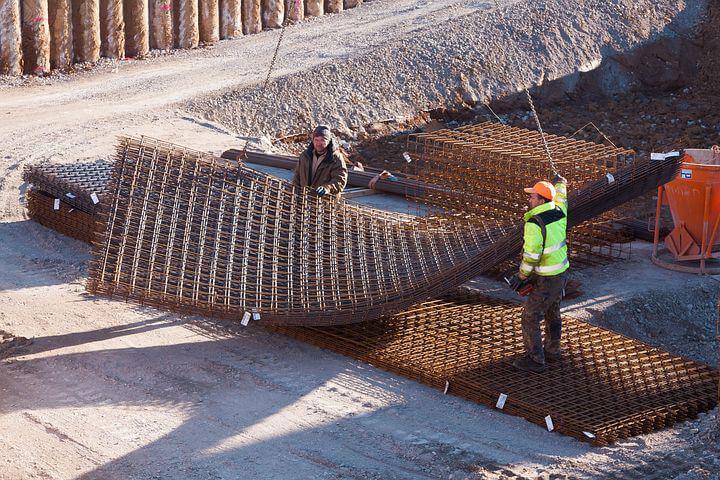About | Working | Where To Use | How To Use | Pros & Cons | Conclusion
The technological world is evolving at a pace like no other, from newer models of phones released every other day to innovative construction technology. The world is buzzing with the mind-boggling ideas which engineers are implementing in their fields every day. And one amongst them is the Mivan technology.
If the term is new to you, do not worry! This article will guide you with all the possible details. So when you finish reading this piece, you are already an advanced beginner. Just make sure you read till the end!
What is Mivan Technology?
Mivan is not a recent construction method. Instead, it is named after a European country called Mivan Company Ltd.
The company manufactures aluminium formworks that are utilized in building construction. But what’s so special about just using a framework? But the formwork is the secret sauce. Employing a simple aluminium framework increases the speed of construction to multifold.
The construction speed may not be a big deal in the case of standalone apartments or individual homes. But when a company builds a township or a cluster of apartments, it takes years. Due to this, the company can be at risk of losing out on potential buyers.

Multiple construction companies are in the queue to sell their apartments or houses. Thus, if you somehow boost your construction speed, it can give you the first mover’s advantage. And this is exactly what Mivan Technology’s benefit is.
Mivan Technology might be a reasonably new name in India, but people in other parts of Asia, Europe, and the world have been using it for quite some time. Mivan Technology works like a magic potion to help you build several buildings in a short amount of time.
How does Mivan Technology Works?
As already mentioned, this technology uses formwork. The formwork is divided into 4 components depending on the location.
The Wall Components
These comprise:
- Stub Pin
- Kickers
- Wall Panel
- Rocker
The Beam Components
For this section, you get:
- Panel for Soffit Bit
- Prop Head
- Beam Side Panel
The Deck Components
The deck components comprise:
- Deck Prop and Prop Length
- Deck Panels
- Soffit Length
Additional Components
Apart from the 3 main components mentioned above, there are some others as well, that include:
- Internal and external Soffit corners
- Exterior and interior edges for wall panels
When all these pieces are combined together, they form the basic framework of the building.
Where Can You Use The Mivan Technology?
Construction companies prefer using Mivan Technology for building extremely tall buildings or clusters of apartments. It is not utilized for building small apartments or houses as that would waste resources.
The structure’s size equals that of a room, thus making it easy to build walls and slabs. Then they employ Mivan shuttering to build room walls using significantly large sizes and floor slabs.
Because the formwork is robust, building slabs and walls help achieve accuracy and manageability simultaneously.
How Is A Mivan Technology Employed In Construction?
Construction companies execute it in three steps.
Assembling the wall
You require a factory-made steel mesh for this technique. Mostly, the companies build it on the construction site itself. The aluminium formwork covers the steel mesh framework from all sides.
The purpose is that it helps hold the concrete until it gains 50% strength. This procedure helps in establishing a solid foothold for the building.
Placing the Aluminum Framework
After building the steel mesh, the companies produce room-sized walls and structured floors. Because it is made of aluminium, the metal slabs are pretty easy to move around and are highly accurate.
In the next step, construction companies combine all these structures with a pin and spearhead system. They destroy these systems once the concrete sits tightly and is ready.
The Last Step
The final step of this process involves pouring concrete into the formwork. After the concrete is stiff enough, the cast is removed.
The best part about the Mivan Technology is that the aluminium bodies can be used approximately 250 times. Thus, it ensures no wastage; hence, it is a highly economical idea.
Pros and Cons of Mivan Technology
Everything has its benefits and drawbacks. So it is imperative that Mivan has it too. Let’s learn about the pros and cons of this technology.
The Pros:
- The requirement of labour is comparatively less
- Floor construction can be done at a much faster pace
- Comparatively, low maintenance required
- An excellent seismic resistance
- No requirement for plastering
- Overall faster completion as compared to traditional methods
The Cons:
- To maintain the alignment, you will need skilled labourers
- One can only use it for building typical traditional floors
- Comparatively expensive
- Setting up the formwork initially takes a while
On A Final Note
Mivan Technology is preferred all across the globe primarily for four significant reasons – durability, cycle time, load carrying capacity, and striking time.
The technology involves easy methods of assembling and construction. But at the same time, it also ensures that the building is built with high precision and durability.
It employs the 3S construction scheme; that is, strength, safety, and speed make it a star among all the existing technologies.
